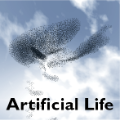There has been on-going philosophical debate on whether artificial life models, also known as digital organisms, are truly alive. The main difficulty appears to be finding an encompassing and definite definition of life. By examining similarities and differences in recent definitions of life, we define life as "any system with a boundary to confine the system within a definite volume and protect the system from external effects, consisting of a program that is capable of improvisation, able to react and adapt to the environment, able to regenerate parts of it-self or its entirety, with energy system comprises of non-interference sets of secluded reactions for self-sustenance, is considered alive or a living system. Any incomplete system containing a program and can be re-assembled into a living system; thereby, converting the reassembled system for the purpose of the incomplete system, are also considered alive." Using this definition, we argue that digital organisms may not be the boundary case of life even though some digital organisms are not considered alive; thereby, taking the view that some form of digital organisms can be considered alive. In addition, we present an experimental framework based on continuity of the overall system and potential discontinuity of elements within the system for testing future definitions of life.
翻译:关于人造生命模型(又称数字生物)是否真正存在,人们一直在进行哲学辩论。主要困难似乎在于找到一个包罗万象和明确的生命定义。通过研究生命最近定义的相似性和差异,我们把生命定义为“任何有边界的系统,将系统限制在一定数量之内,保护系统不受外部影响,包括一个能够即兴发挥、能够反应和适应环境、能够自己或整体再生一部分生命环境、能够使部分生命本身或整个环境再生、能源系统由不干预的自我维持反应组成,被视为活的或活的系统。任何包含一个程序并可以重新组合成一个生命系统的不完整系统,因此,为了不完全系统的目的将重新组装起来的系统也被视为活的系统。” 使用这一定义,我们认为,数字生物也许不是生命的界限,即使一些数字生物体被认为不活的;因此,考虑到某些形式的数字生物体可以被视为活的。此外,我们提出了一个实验框架,其基础是整个系统的连续性和今后对各种要素的不连续性定义。




